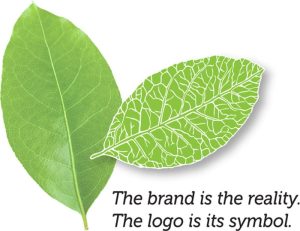 Here’s an often overlooked point in communications design: The function of a logo is to represent your brand in a visual way, but is not the brand itself, just as a map is not the actual terrain it depicts.
Here’s an often overlooked point in communications design: The function of a logo is to represent your brand in a visual way, but is not the brand itself, just as a map is not the actual terrain it depicts.
In order to create a successful logo, it is important to have a workable brand definition in hand at the onset of the project, or develop one. In the last several years, branding has become a signature service offered by many design firms. Since the function of design is to inspire desired behaviors in the client’s audience, an experienced designer should be well positioned to assist in brand development.
This is a strategic process with specific outcomes. It is not the same thing as design development, which should always be driven by brand strategy. James McNamara, a noted arts branding expert, lists the following as the basics:
1. Identification of, and recommendations to resolve, an organization’s major communications issues (e.g. misperceptions to correct, new ideas to communicate, organizational issues that need to be rectified to ensure effective communications).
2. Identification and analysis of the audiences with whom you want to communicate.
3. A Position Statement focusing people internally on how to think about your organization that is used to inform critical organization messages and visual identity.
4. Key Image Attributes, almost personality traits, for your organization that need to be communicated via messages or visuals. These often suggest graphic identity development.
5. Primary and supplementary Organization Messages that must be communicated consistently about your organization.
McNamara thinks that brand strategy and design strategy are both important, but that design should stem from branding. Your brand strategy should be a guide to how you want your business or organization to be perceived, and how to make basic decisions about how you convey your value, how you address your audience, and how you craft your messages to that audience.
After this thoughtful deliberation, you will be much better able to make productive decisions about your design and communications strategies. As a result, your choices will be more effective, and therefore truly support your business goals. Understanding what the job requires makes all the difference in choosing the right tools.
